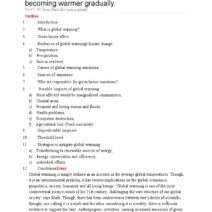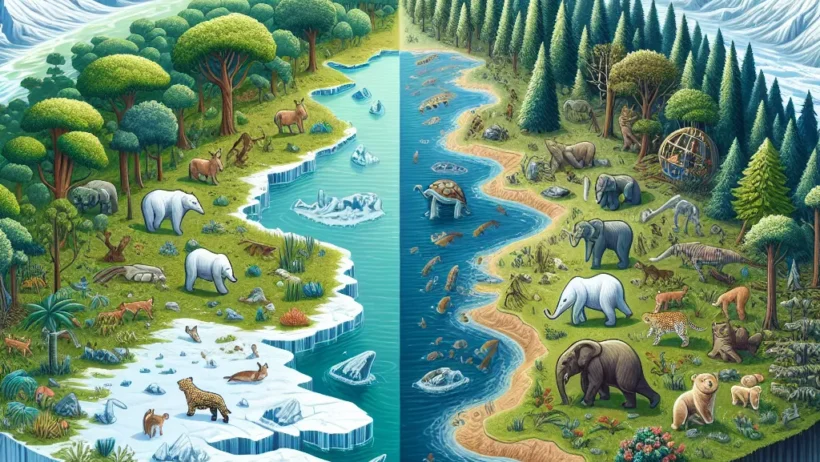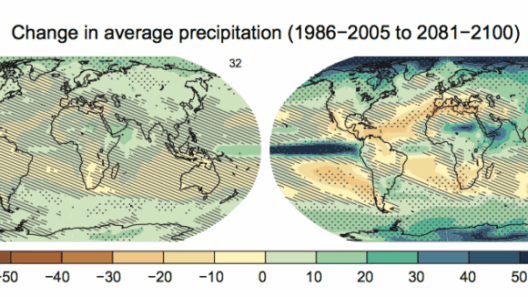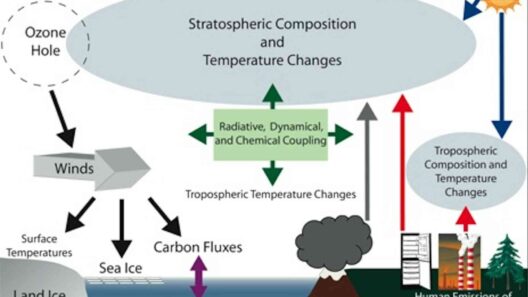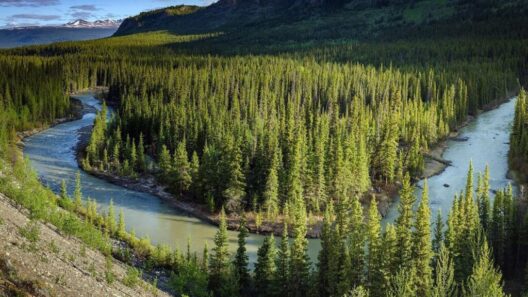As we traverse the complexities of our planet’s ecosystems, a pressing question looms: How resilient are these delicate networks in the face of relentless climate change? The intricate web of life, characterized by interdependence among species, is encountering extraordinary challenges due to global warming. This phenomenon is not merely a distant worry but a contemporary crisis that threatens the very foundation of our environmental fabric.
Global warming, primarily driven by anthropogenic activities—such as the combustion of fossil fuels and deforestation—has resulted in a marked increase in atmospheric greenhouse gas concentrations. The consequences of this rise are multifaceted, not only affecting weather patterns but also wreaking havoc on biodiversity and ecosystem stability. As temperatures rise, ecosystems face a cascade of adverse effects, leading to altered habitats, species displacement, and the disruption of critical ecological services.
Consider the coral reefs, often dubbed the rainforests of the sea due to their astounding biodiversity. These vibrant ecosystems are particularly susceptible to temperature fluctuations. Even a slight increase in sea temperature can lead to coral bleaching, a phenomenon whereby corals expel the symbiotic algae living within their tissues. The loss of these algae not only deprives corals of their color but also their primary source of food, leading to widespread coral mortality. As a result, the ecosystems that rely on coral reefs for shelter and sustenance, including numerous fish species, face imminent peril.
Furthermore, rising ocean acidity—resulting from increased carbon dioxide absorption—compounds the threat to marine biodiversity. Shellfish, such as oysters and clams, struggle to form their calcium carbonate shells in more acidic waters. The cascading effects of this cascading failure can reverberate through the food chain, impacting not just marine life, but also the coastal communities that depend on these organisms for their livelihoods.
Terrestrial ecosystems are not immune to the pressures of global warming either. For instance, forests, which serve as vital carbon sinks, are increasingly becoming carbon sources due to enhanced tree mortality from pests and pathogens thriving in warmer conditions. Additionally, as climate zones shift, many species face a race against time to adapt or migrate to suitable habitats. However, barriers such as urbanization and agricultural land can hinder their movement, leading to a potential loss of biodiversity and ecosystem functionality.
The consequences of these changes extend beyond biological realms. Ecosystems provide essential services that are key to human survival: clean water, air purification, pollination, and natural pest control. As ecosystems degrade, these services diminish, placing additional strains on human health and economic systems. Imagine the precarious position of agricultural systems reliant on pollinators. If pollinator populations decline due to habitat loss and climate stressors, food production could falter, leading to food shortages and increased prices. What would you do if your local grocery store shelves began to empty?
In the Arctic, the repercussions are equally alarming. The ice cap, a sentinel of climate stability, is shrinking at an unprecedented rate. This not only jeopardizes the species adapted to these frigid conditions, like polar bears and seals, but also contributes to rising sea levels that threaten coastal settlements globally. As the ice melts, it releases trapped methane, a potent greenhouse gas that further exacerbates warming. Here lies indeed a challenge: how do we mitigate feedback loops that amplify the problem of climate change? Our understanding of ecological dynamics is vast, yet the solutions are often elusive and complex.
Land ecosystems are experiencing similar trends of upheaval. Grasslands, savannas, and wetlands are becoming increasingly vulnerable due to changing precipitation patterns, leading to droughts and flooding. The resultant loss of habitat can cause shifts in community structures, with invasive species often taking advantage of the turmoil. These non-native species frequently outcompete local flora and fauna, further destabilizing the ecosystem and sometimes leading to local extinctions.
Despite these daunting challenges, there remains a glimmer of hope in the resilience inherent in nature. Ecosystems have displayed remarkable adaptability throughout evolutionary history; however, the rate of change induced by human activity is unprecedented. It begs the question: Can we harness our ingenuity and collective will to support these fragile systems? The potential solution lies in a multi-faceted approach involving conservation, restoration, and sustainable practices that can alleviate some of the pressures exerted on ecosystems.
In conclusion, global warming is an existential threat that reshapes our environment in ways that are profound and alarming. Ecosystems are under extreme pressure, yet they offer us invaluable services and a wealth of biodiversity. As stewards of the earth, the responsibility rests upon us to advocate for policies and practices that protect these precious environments. The challenge is formidable, but with heightened awareness and concerted action, we can endeavor to cultivate a more sustainable future where ecosystems thrive and coalesce harmoniously with human activity.


